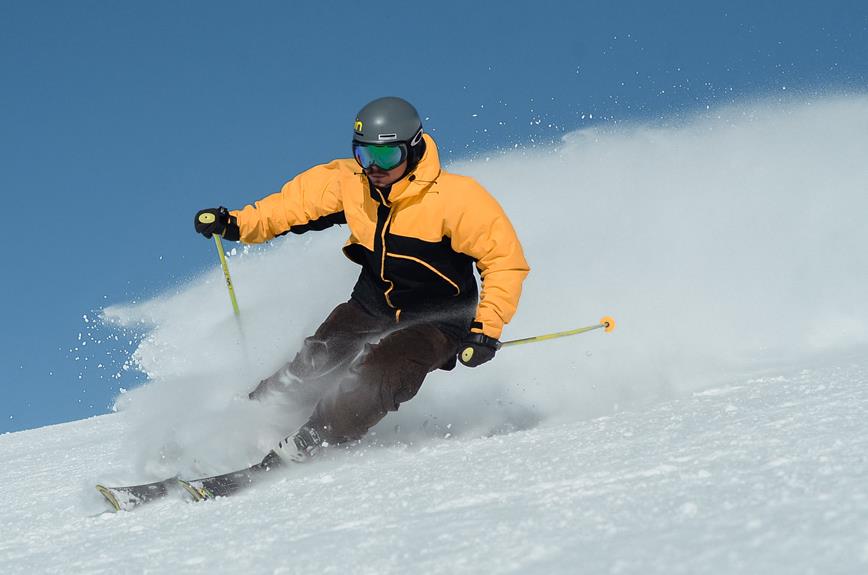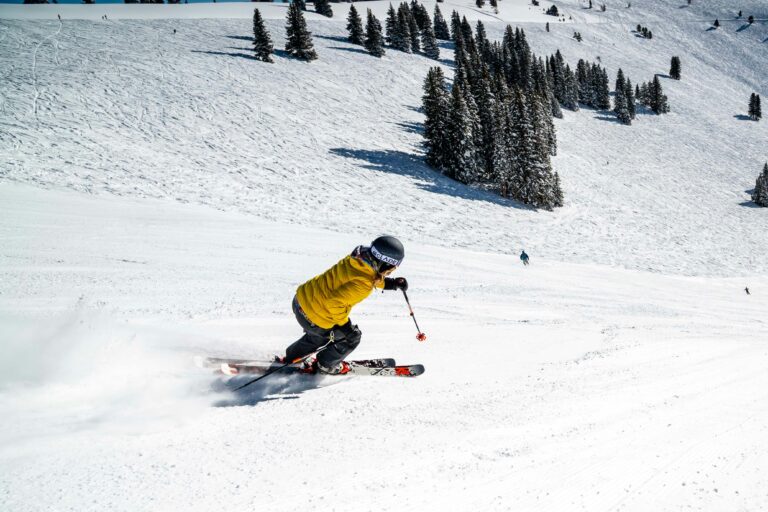Ski Helmet Vs Bike Helmet – Essential Tips Inside
Did you know that according to a study conducted by the National Ski Areas Association, wearing a helmet while skiing or snowboarding can reduce the risk of head injury by up to 60%?
Now, you might be wondering, how does a ski helmet compare to a bike helmet in terms of protection and functionality?
Well, that's what we're here to discuss.
So, buckle up (or should I say, strap on your helmet) and let's dive into the world of ski helmets versus bike helmets.
Key Differences
The key differences between ski helmets and bike helmets lie in their specific designs and functions for each respective activity.
A ski helmet is designed to protect your head while skiing or snowboarding. It's made with a hard outer shell and a thick lining to provide insulation and warmth in cold weather. Ski helmets also often have built-in ear muffs to protect your ears from the cold.
On the other hand, a bike helmet is specifically designed for cycling. It's made with a lightweight outer shell and a ventilation system to keep your head cool during physical activity. Bike helmets are tested and certified to provide protection in cycling accidents, which can prevent serious head injuries or even death.
When choosing the right helmet for your activity, it's important to consider the specific features and certifications. While some cyclists may choose to use a ski helmet for cycling in cold weather, it's crucial to ensure that the ski helmet is designed and certified for cycling use.
Safety Features
To ensure your safety while engaging in skiing or cycling, it's important to understand the distinct safety features of ski helmets and bike helmets. Here are some key points to consider:
- Design Features: Ski helmets often have built-in ear muffs and thicker lining for extra warmth, making them ideal for cold weather conditions. On the other hand, bike helmets prioritize maximum ventilation to keep you cool during physical activity.
- Safety Standards: Bike helmets are specifically tested and certified for impact protection in cycling accidents. This ensures that their safety features are optimized for the specific impact forces experienced during cycling. Ski helmets, while offering protection, may not provide the same level of impact protection as bike helmets in high-speed cycling accidents.
- Versatility: Multi-sport helmets are available, meeting safety standards for both skiing and cycling. These helmets provide the versatility and safety needed for individuals who participate in multiple sports.
Understanding these safety features is crucial for selecting the right helmet for your chosen activity. Whether you're hitting the slopes or cycling through challenging terrains, a properly fitted helmet that meets safety standards will provide the necessary protection for your head. Remember to prioritize safety and choose the helmet that best suits your needs.
Comfort and Fit
When selecting a helmet for skiing or cycling, prioritize comfort and fit to ensure maximum safety. A properly fitting helmet is crucial for effective head protection. For both ski and bike helmets, it's important to find one that fits snugly without any gaps or feeling too tight. The front of the helmet should align with your eyebrows, and the strap should be tightened until it feels comfortable.
When trying on a helmet, be mindful of any shakiness or feeling of spaciousness, as this indicates it's either too big or too small for your head. Comfort is also influenced by the materials and design of the helmet. Look for helmets with adequate ventilation to prevent discomfort during use. Adjustable features such as vents and straps can help customize the fit and enhance overall comfort.
Ski helmets often come with ear covers to provide additional warmth and protection. When purchasing a helmet, make sure it meets the safety standards set by the ASTM F organization to ensure optimal protection for skiing or cycling activities.
Weather and Climate Considerations
Consider the temperature and weather conditions when selecting a helmet for cycling or skiing to ensure optimal comfort and protection.
When it comes to weather and climate considerations, there are a few key points to keep in mind:
- Ventilation: For cycling in hot weather, it's crucial to choose a bike helmet with proper ventilation. This will help keep you cool and prevent overheating during intense rides. Look for helmets with well-placed vents that allow for maximum airflow.
- Cold Weather Protection: In colder climates, using a ski helmet for winter biking can provide extra warmth. However, it's important to ensure proper ventilation and fit to avoid discomfort. Ski helmets may not have the same level of ventilation as bike helmets, so be mindful of the potential for overheating during intense cycling in warmer climates.
- Multi-Sport Versatility: Consider multi-sport helmets that are certified for both snow and bike use. These helmets offer versatility for individuals who participate in multiple sports and can be a suitable option for varying weather conditions. They provide the necessary protection for both skiing and cycling activities.
Price and Affordability
Ski helmets tend to be more expensive than bike helmets due to their specialized features and construction. The price difference can be attributed to the fact that ski helmets are designed specifically for skiing and snowboarding, which require additional protection against high impacts. These helmets are made with materials that can withstand the harsh conditions of the slopes, such as freezing temperatures and heavy snowfall.
In contrast, bike helmets are designed for cycling, which typically involves lower speeds and less extreme conditions. The affordability of bike helmets makes them a practical choice for cyclists of all levels, from casual riders to commuters. The lower cost of bike helmets allows for wider accessibility, ensuring that more cyclists can afford proper head protection. This is particularly important considering the need to replace helmets after crashes or due to wear and tear. Bike helmets offer a budget-friendly option that doesn't compromise on safety.
On the other hand, the higher price of ski helmets may discourage some cyclists from using them for winter biking. While ski helmets can provide additional protection in colder and more challenging conditions, the cost can be a deterrent for those on a tighter budget. This makes bike helmets a more affordable and accessible choice for cyclists, regardless of their skill level or cycling activity.
Frequently Asked Questions
Can I Wear a Bike Helmet for Skiing?
Yes, you can wear a bike helmet for skiing. However, consider helmet safety standards, fit, comfort, ventilation, visibility, weight, durability, price range, design, style, accessories, and compare helmet brands for the best choice.
What Is the Difference Between Ski Helmet and Winter Bike Helmet?
The difference between a ski helmet and a winter bike helmet lies in safety features, ventilation options, impact protection, fit and comfort, design and aesthetics, weight and portability, price range and affordability, durability and lifespan, compatibility with goggles or visors, and insulation and weather resistance.
Can You Use a Hockey Helmet for Biking?
No, you should not use a hockey helmet for biking. Hockey helmets are designed for different impacts and may not provide adequate protection for cycling. It's important to use a helmet specifically designed for biking for optimal safety.
Is There a Difference Between a Skate Helmet and a Bike Helmet?
Yes, there is a difference between a skate helmet and a bike helmet. Skate helmets are designed for skateboarding and have different safety standards, helmet design, and impact protection compared to bike helmets.
Conclusion
In conclusion, when it comes to choosing between a ski helmet and a bike helmet, it's important to consider the specific needs and requirements of each activity.
While ski helmets offer more padding and insulation for warmth and high-impact falls, bike helmets prioritize ventilation and aerodynamics for crashes and impacts on the road.
It's recommended to use a helmet specifically designed for cycling for optimal protection and comfort.






